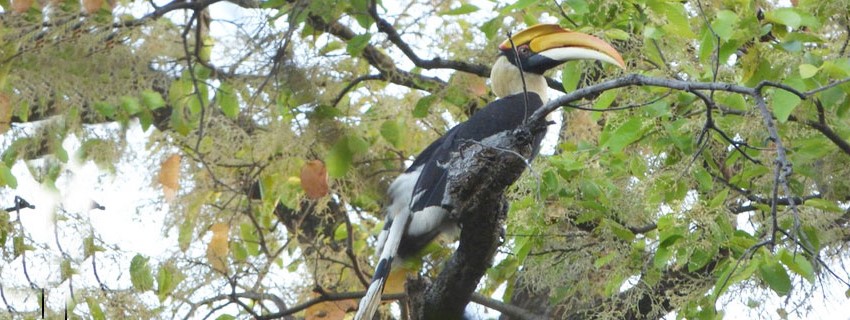Birds of Dudhwa National Park
Birds of Dudhwa
Back in 1958, it was discovered that the deer species we know as swamp deer or barasingha needed protection. A small area in the Terai region of Uttar Pradesh's Lakhimpur Kheri District was home to this rare and endangered species. Today we know of this place as Dudhwa National Park–one of the three protected areas (the other two being Kishanpur Wildlife Sanctuary and Katarniaghat Wildlife Sanctuary) that together constitute Dudhwa Tiger Reserve.
The geographical location of Dudhwa allows for a thick cover of sal and teak forest, many horseshoes bend caused by the meandering rivers and plenty of swamp areas due to the high water table. Apart from being home to some of the most endangered animals like tiger, one-horned rhinoceros and the hispid hare, Dudhwa National Park is also an excellent home to rare avian species like the Bengal Florican. For an avid birder, the park is a haven. More than 350 species of birds have been reported from Dudhwa National Park making it a hotspot for bird watching. Banke Tal, a natural waterbody is one of the most popular birding spots in the park. From resident birds to the winter migrants, the variety is astounding. The combination of swamps, thick forests and open grasslands makes for a healthy home to the avian population. Here is a pick of top five birds you should look out for while birding in Dudhwa National Park.
There are about 10000 bird species in the world. In which 1300 bird species are found in India. Uttar Pradesh has more than 550 species of them.
Among all groups of animals in the world, birds are most liked owing to their rich colour, song, easy recognition and liveliness. Moreover, birds are present everywhere. We can see birds in city gardens, crop fields, forests, grasslands and wetlands.
Dudhwa National Park, together with Kishanpur and KATARNIAGHAT Wildlife Sanctuaries, represent the best natural forests and grasslands left in the Terai region of Uttar Pradesh.
The three protected areas, being the last viable home of the Royal Bengal Tiger in the state, have been jointly constituted into Dudhwa Tiger Reserve. There is an enviable bird life with over 450 resident as well as migratory species.
For birds observation, a binocular is a great help as it allows unobtrusive observation without disturbing the bird by approaching too close. A binocular with a magnification of 8 to 10X and field of view 5.5 degree to 8 degree is usually adequate. For waterbirds, a spotting scope or telescope mounted on a tripod can be great help. The park has rich bird life, with over 350 species, including the swamp francolin, great slaty woodpecker and Bengal florican. Dudhwa also boasts a range of migratory birds that settle here during winters. It includes among others, painted storks, black and white necked storks, sarus cranes, woodpeckers, barbets, kingfishers, minivets, bee-eaters, bulbuls and varied night birds of prey.
There are also drongos, barbets, cormorants, ducks, geese, hornbills, bulbuls, teal, woodpeckers, heron, bee-eaters, minivets, kingfishers, egrets, orioles, painted storks, owls. Dudhwa's birds in particular are a delight for any avid bird watcher where bengal florican is most popular between bird watchers. The marshlands are habitat for about 400 species of resident and migratory birds including the swamp francolin, Wild boar, Python, Gharial, Otter, Monitor Lizard,Turtles, Blue bull, great slaty woodpecker, Bengal florican, plenty of painted stork, sarus crane, several species of owl, Asian barbet, woodpecker and minivets. Much of the park's avian fauna is aquatic in nature and found around Dudhwa's lakes such as Banke Tal.


